I mean let’s be honest…farmhouse floors can make or break a farmhouse. Refinishing the farmhouse floors at Sixty-One Park was such a huge job but it was all worth it because of what they look like now! I love this finish:
I can still remember when the guys were still redoing the foundation and putting in new floor joists:
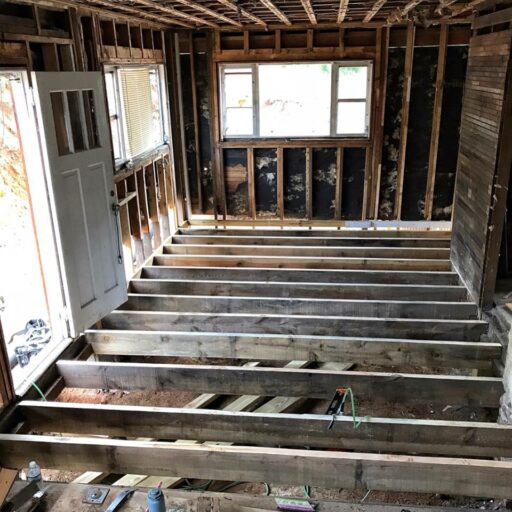
New flooring where the new joists were put in. The cool thing is Jaime said the milling of the new floor matched up exactly to the old flooring. 2.25″ red oak is as timeless as you can get…100 years later and it’s the exact same:
Some of the floors downstairs dated back to 1911 and a few floors had been added over the old at later dates. There was a drop down transition from the kitchen to the dining room so Jaime made a large wood threshold:
Remember that strange master bath that had been added where the dining room had been? They had drilled holes into the old wood floor….boo. We had to plug those holes and most were just filled with dowels but the easiest way to plug the larger holes was to just take out the old strips and add in new ones:
Any old wood floor we took out from somewhere we used for patching. The old had to be de-nailed….that took a few days just on its own:
All the downstairs were sanded down to remove the old finish and then stained. Here’s a time lapse of Jaime staining one of the floors:
We used Minwax Jacobean because it was the closest to the original floor color:
A funny aside to this stain…I’ve always pronounced this color similiar to Jack-o-lantern. JACK-o-bean, but that’s incorrect. It’s actually Jack-oh-BEE-uhn. It refers to the Jacobean era which was the reign of King James I. But then I had to figure out why it wasn’t called Jamesobean. Ready? According to the Oxford Dictionary the word Jacobean is derived from Jacobus, which is the Ecclesiastical Latin form of James. Anyway, the Jacobean period, roughly 1600–1690, was known for its medieval dark finishes.
Here’s one of the old wood floors after sanding to compare to the new wood. Looks very similar, right?
After a coat of Jacobean:
What I love about our floors though is the final finish…an antique flat varnish…specifically Antique Flat Ultra Max Oil Modified Polyurethane by ZAR:
I wanted to keep the original farmhouse floor look and anything too glossy would have ruined that idea. On most of the downstairs floors the varnish could just be poured out and spread with a brush:
The varnish only needed 2 hours of drying time between coats and it’s low odor:
The upstairs floor didn’t require a lot of prepwork but they did require a week of cleaning.
I scrubbed them by hand Cinderella-style:
Every single crack had to be cleaned out from 100-years worth of dirt and grime:
Literally on my hands and knees:
I think I found 6,000 bobby pins, stick pins, earring backs, beads and two vintage GAME OF LIFE people:
The upstairs floors had so much farmhouse character that I was almost afraid to do anything to them:
We lightly sanded areas where there were splinters forming or where boards had chipped:
Upstairs it was easier to apply stain using an old mop:
And once it was dry three coats of the same antique flat varnish was applied:
Ahh! They look so good!
Now I feel like things are moving so fast. Trim is going on and doors are going in.
You can read more posts about the Sixty-One Park Farmhouse here and follow more progress on Instagram here (@sixtyonepark) and here (@lilblueboo).

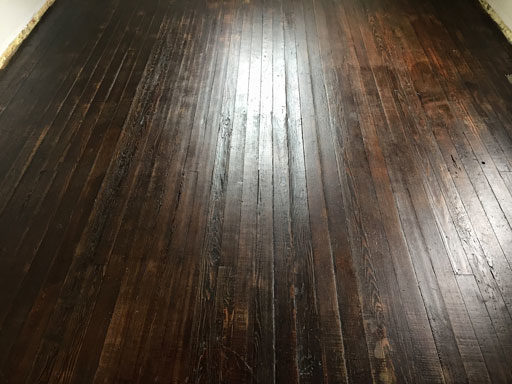
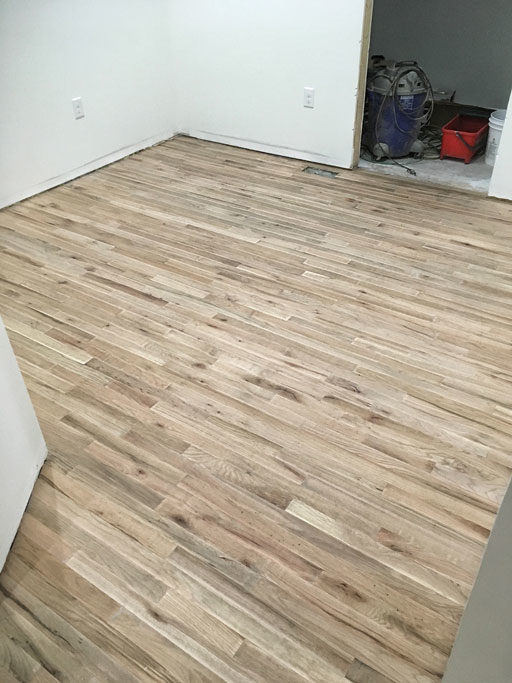
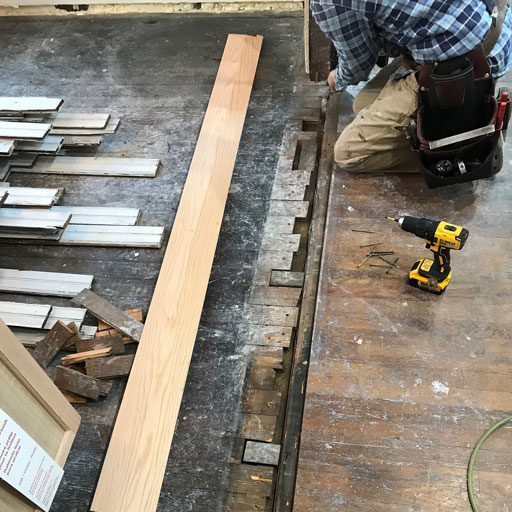
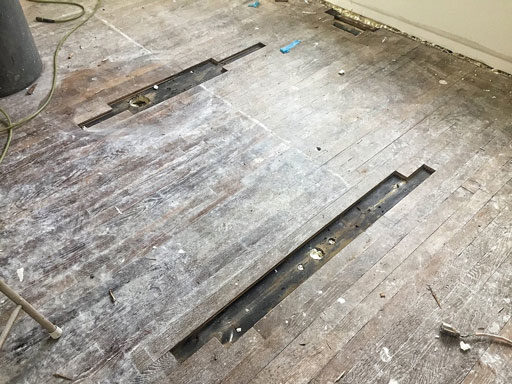
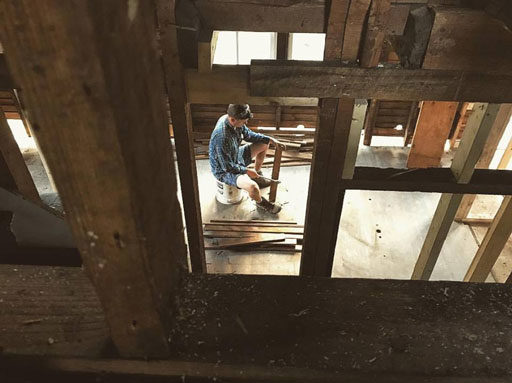
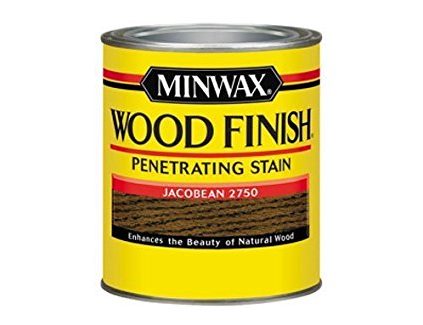
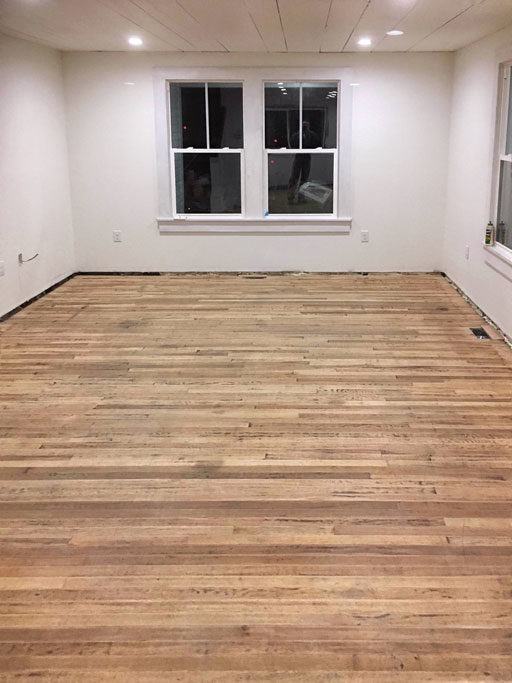
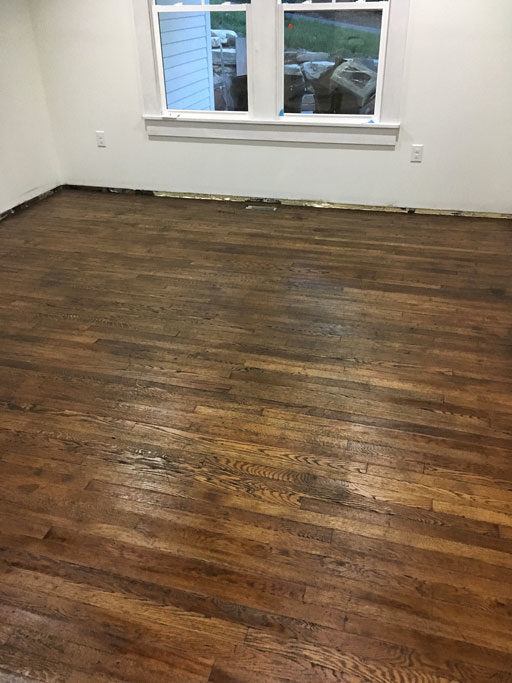
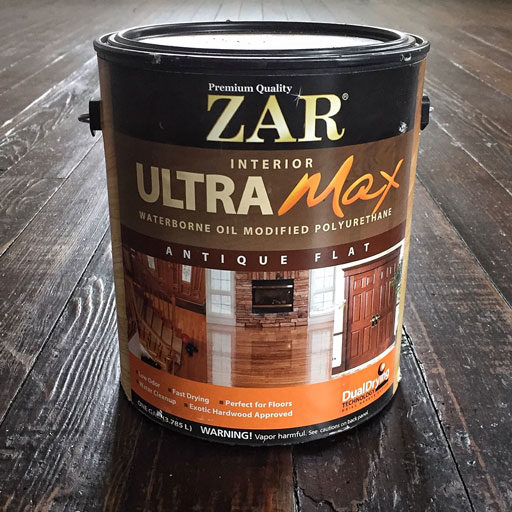
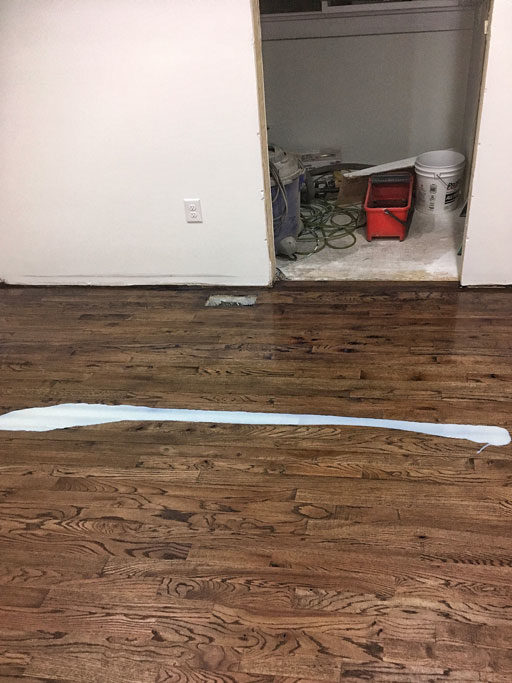
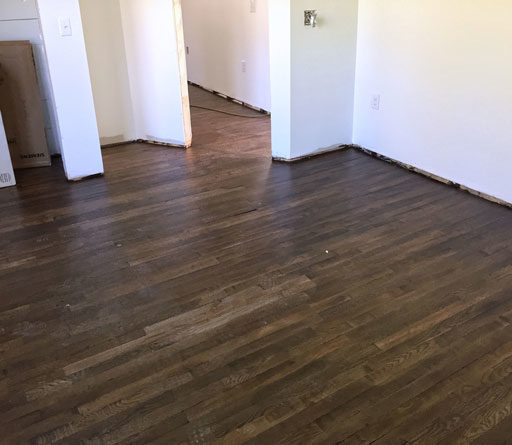
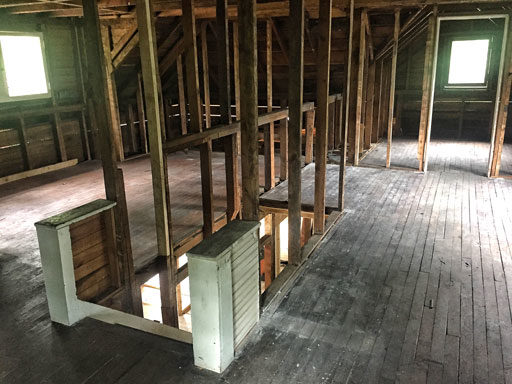
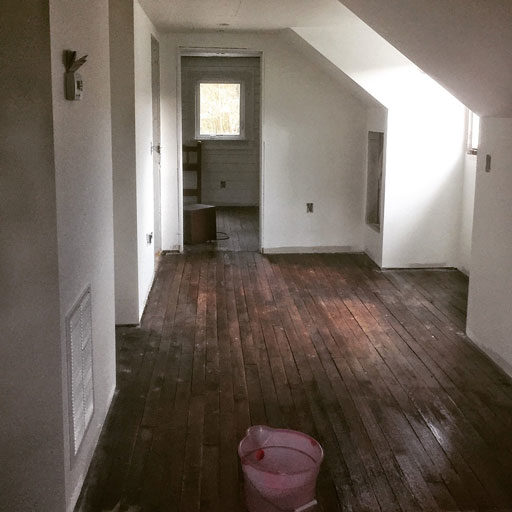
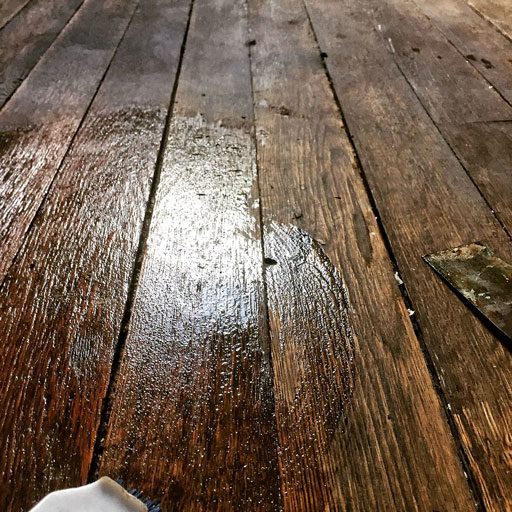
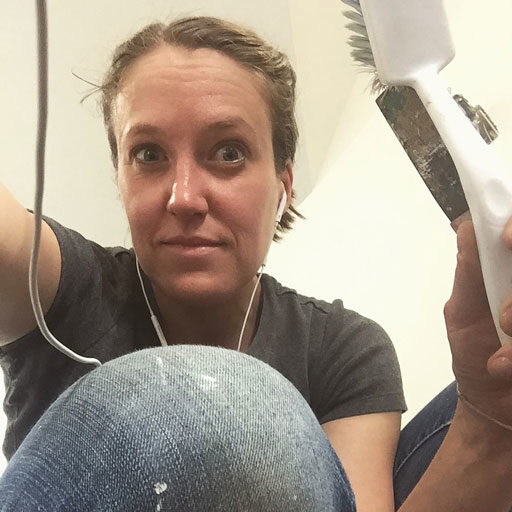
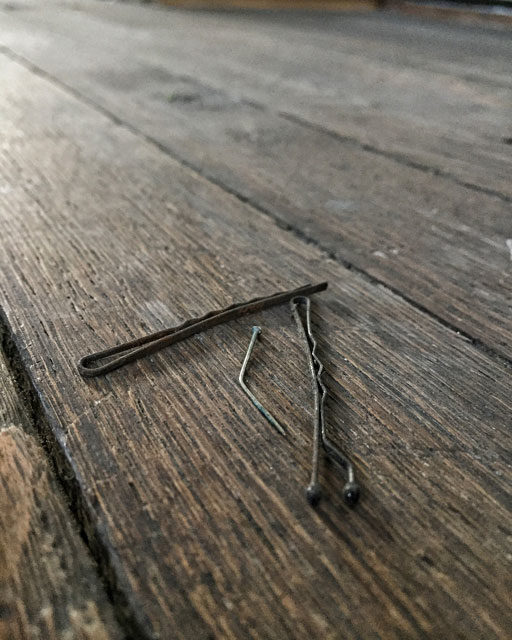
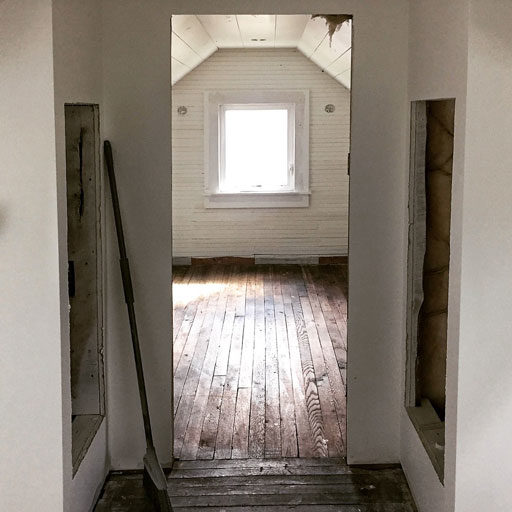
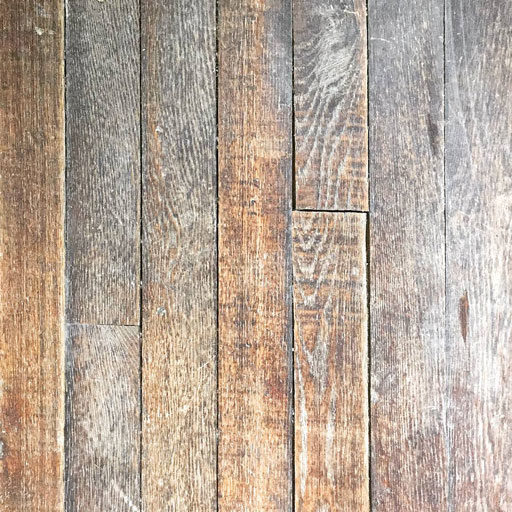
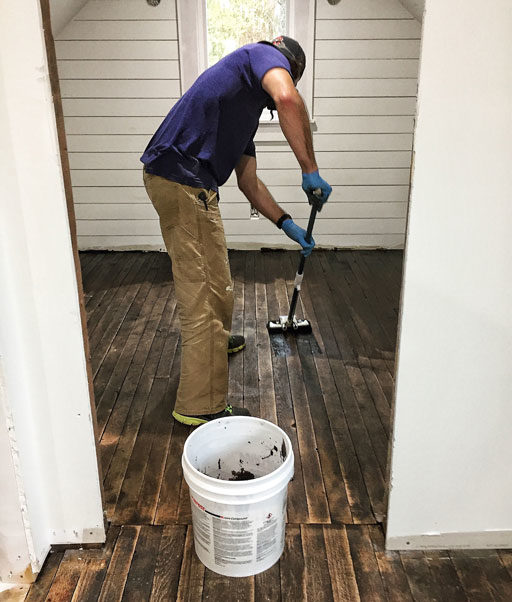
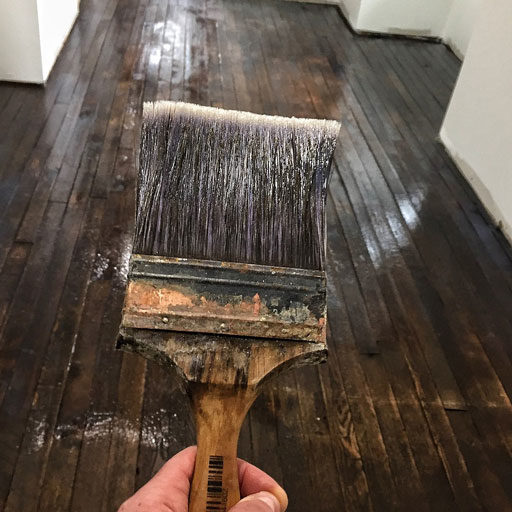
They look great. I love hardwood floors. When we renovated our 1890ish home, we restored the original floors where we could and added additional hardwood in rooms that had wall to wall carpet. We have no wall to wall carpet–just wood and tile and wonderful area rugs. We love it.
I think you should make a collage from the stuff you found and hang it at the farmhouse!